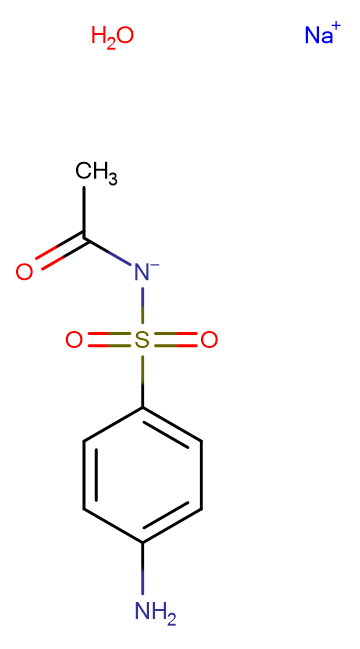
Sulfacetamide sodium
CAS No. 127-56-0
Sulfacetamide sodium( N-acetyl Sulfanilamide )
Catalog No. M11146 CAS No. 127-56-0
Sulfacetamide Sodium is an anti-infective agent that is used topically to treat skin infections and orally for urinary tract infections.
Purity : >98% (HPLC)
 COA
COA
 Datasheet
Datasheet
 HNMR
HNMR
 HPLC
HPLC
 MSDS
MSDS
 Handing Instructions
Handing Instructions
| Size | Price / USD | Stock | Quantity |
| 500MG | 35 | In Stock |


|
| 1G | Get Quote | In Stock |


|
Biological Information
-
Product NameSulfacetamide sodium
-
NoteResearch use only, not for human use.
-
Brief DescriptionSulfacetamide Sodium is an anti-infective agent that is used topically to treat skin infections and orally for urinary tract infections.
-
DescriptionSulfacetamide Sodium is an anti-infective agent that is used topically to treat skin infections and orally for urinary tract infections.
-
In Vitro——
-
In Vivo——
-
SynonymsN-acetyl Sulfanilamide
-
PathwayAutophagy
-
TargetAutophagy
-
RecptorAutophagy
-
Research AreaInfection
-
Indication——
Chemical Information
-
CAS Number127-56-0
-
Formula Weight236.22
-
Molecular FormulaC8H9N2NaO3S
-
Purity>98% (HPLC)
-
SolubilityWater: 51 mg/mL (215.9 mM); DMSO: 19 mg/mL (80.43 mM)
-
SMILESO.[Na+].CC(=O)[N-]S(=O)(=O)C1=CC=C(N)C=C1
-
Chemical Name——
Shipping & Storage Information
-
Storage(-20℃)
-
ShippingWith Ice Pack
-
Stability≥ 2 years
Reference
1.Hanna C, et al. Ann Ophthalmol. 1985 Sep;17(9):560-4.
molnova catalog



related products
-
Sofalcone
Sofalcone a gastric antiulcer agent in clinical use is known to induce the expression of Heme oxygenase-1 (HO-1) in gastric epithelium.
-
EACC
EACC selectively inhibits the translocation of autophagosome-specific SNARE Stx17 thereby blocking autophagosome-lysosome fusion.?
-
AC-73
AC-73 is an orally available Cluster of Differentiation 147 (CD147) inhibitor with high bioavailability that selectively disrupts the dimerization of CD147 .



 Cart
Cart
 sales@molnova.com
sales@molnova.com


